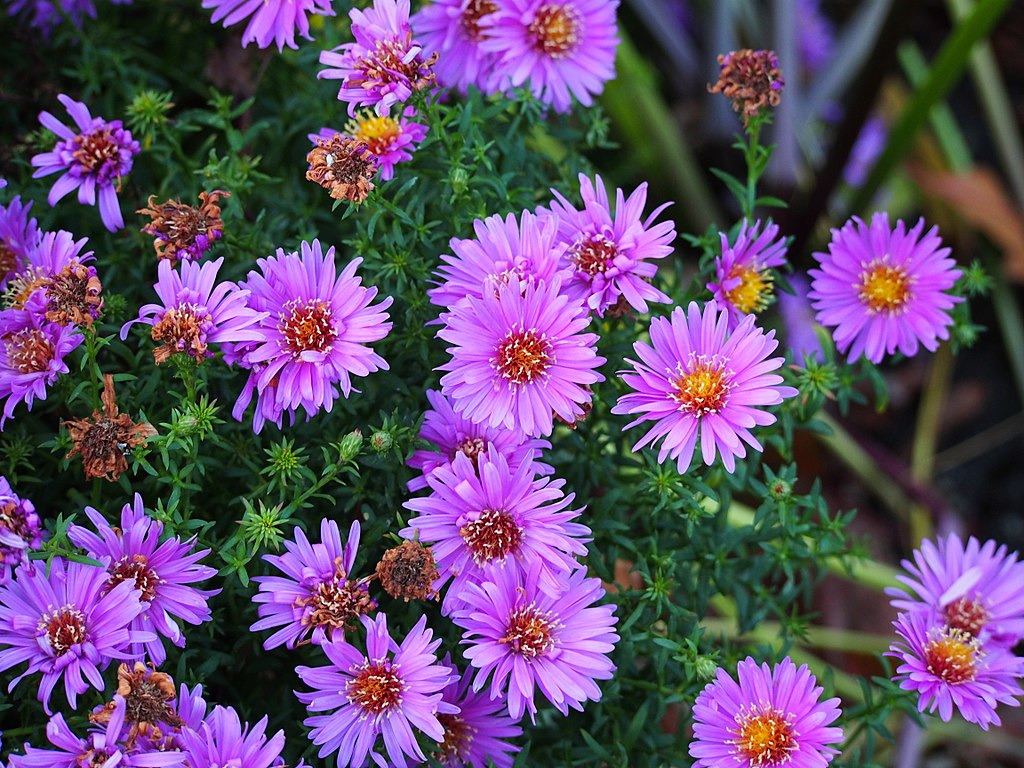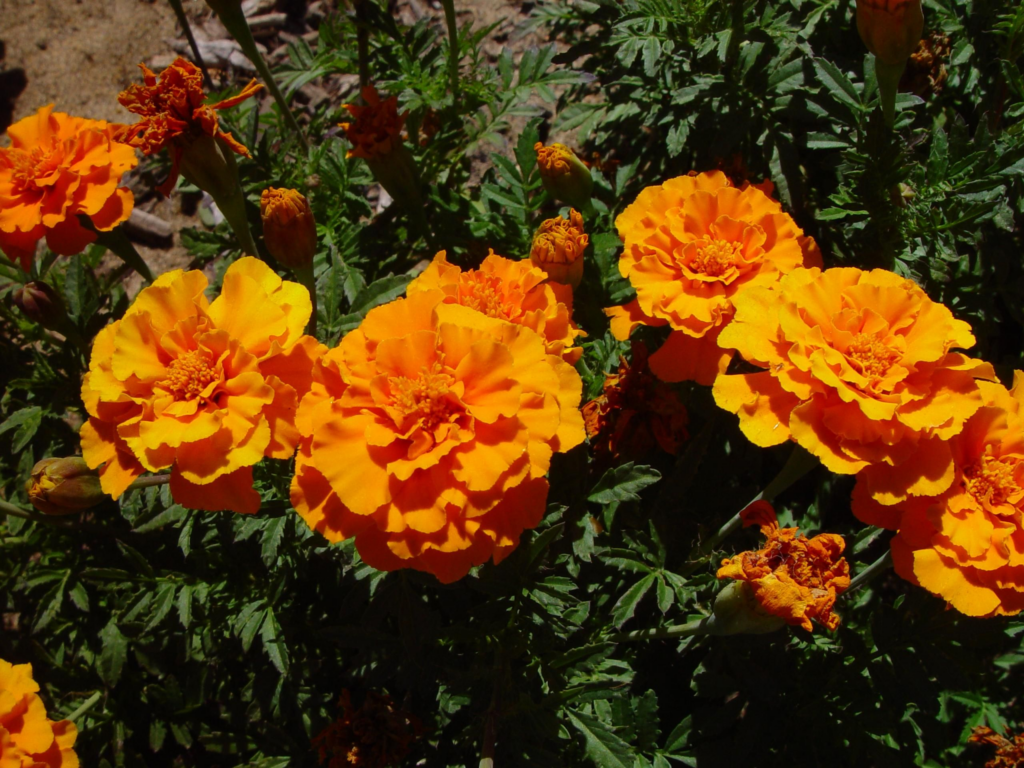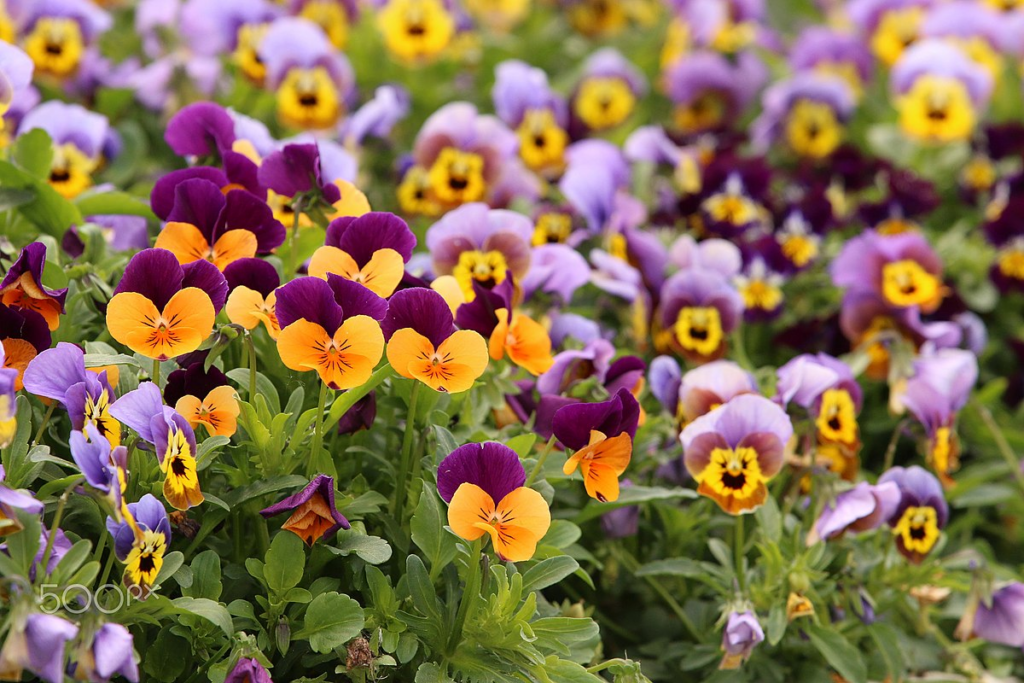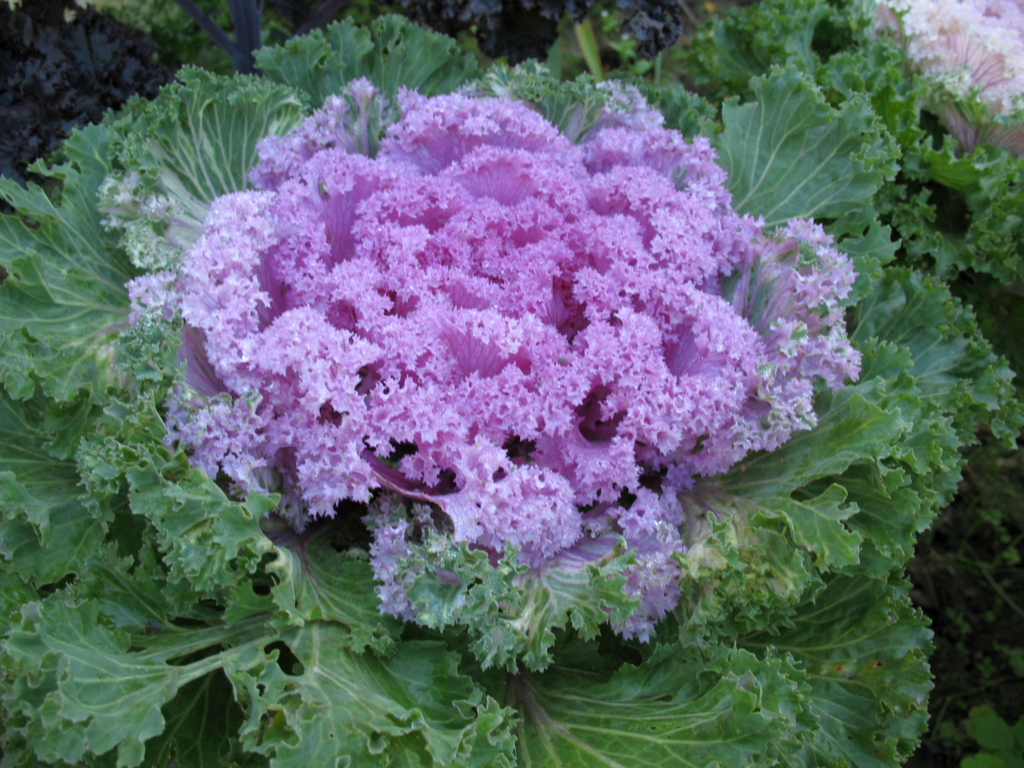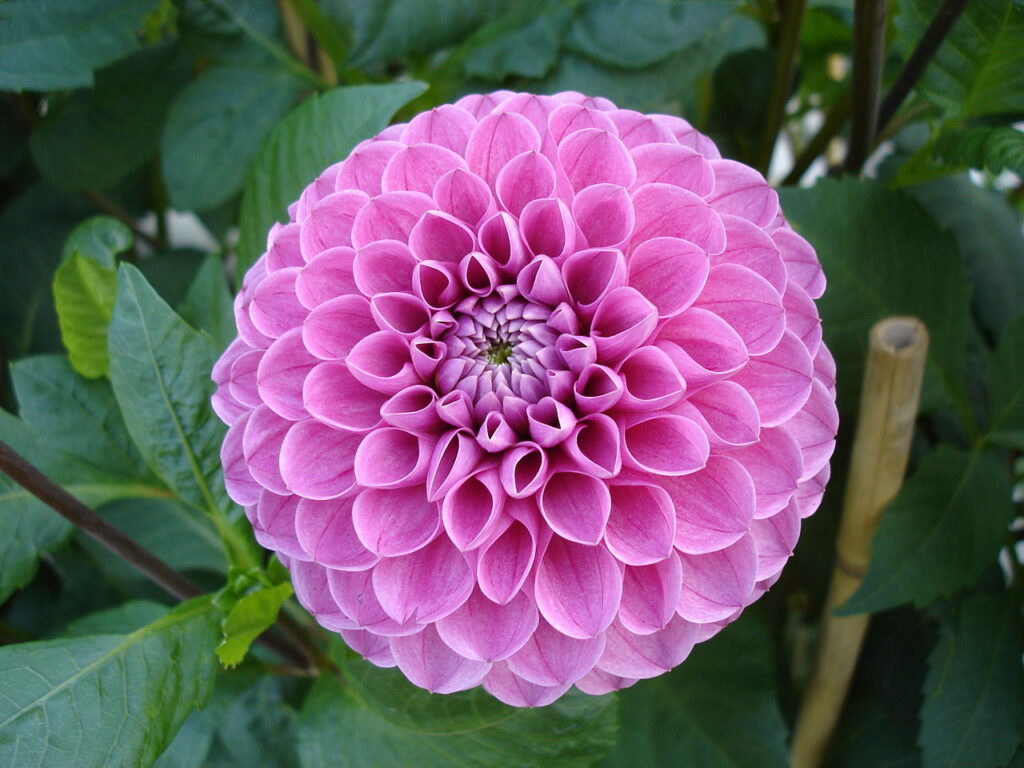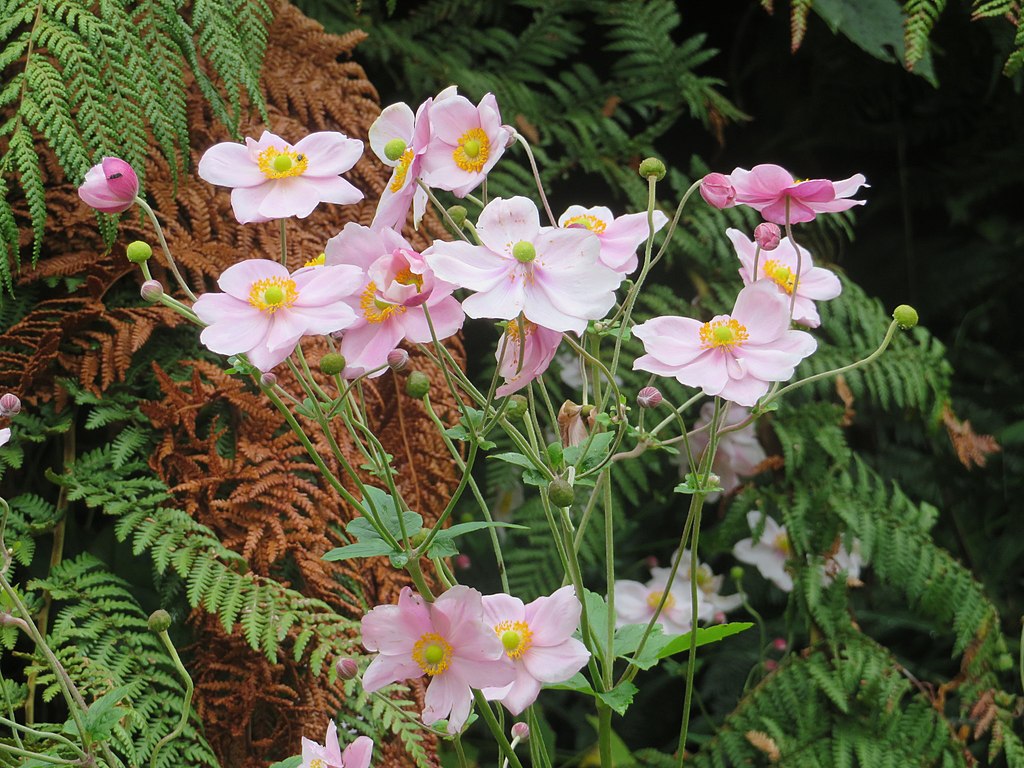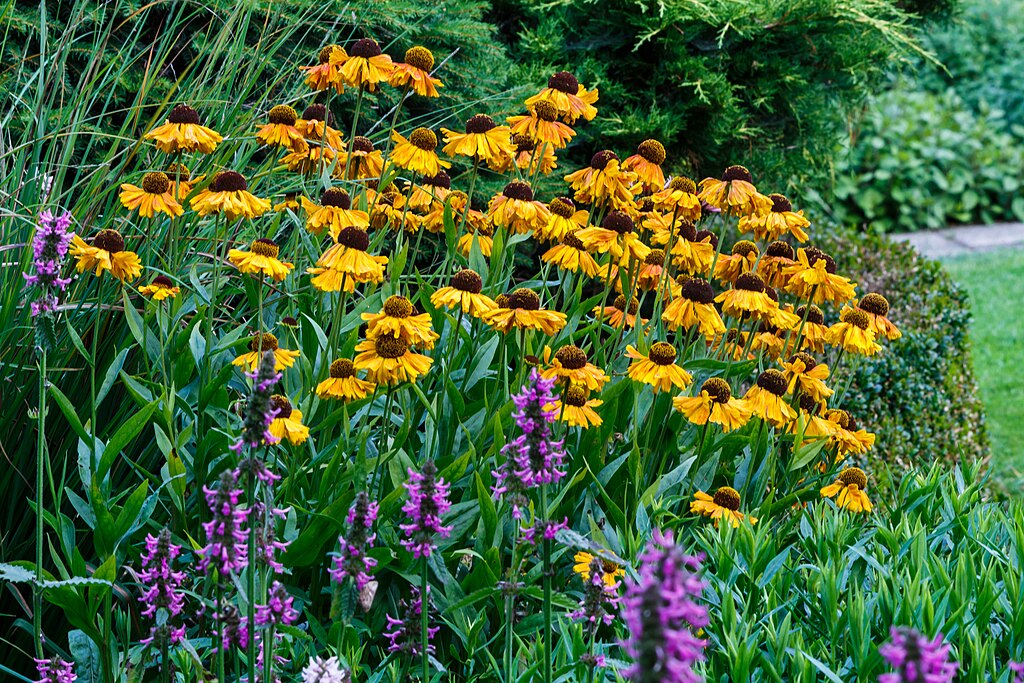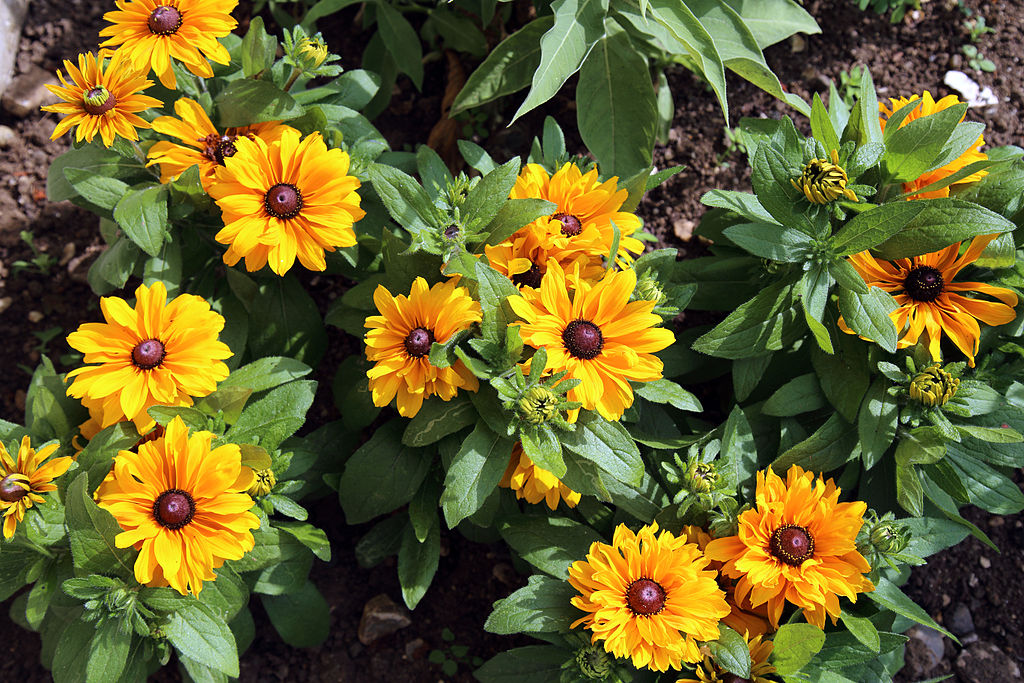There are plenty of options for fall-blooming flowers to choose from when designing your garden for autumnal hues. These plants come in a variety of shapes and colors to add color to your yard as summer comes to an end, from hardy annuals to late-season perennials. Certain fall flowers need special attention, but others are very carefree.
These ten superb fall-blooming flowers are ideal for a range of climates and growing conditions, so give them a try in your yard.
Chrysanthemums
Chrysanthemums can be white, yellow, pink, purple, or any combination of these colors. They grow best as perennials in USDA hardiness zones 5 through 9, where they are best suited for well-drained soil that contains some organic content. For best growth, these flowers require full sun and frequent irrigation, letting the soil dry out a little in between. Their ability to draw pollinators like as butterflies and bees enhances the biodiversity of gardens.
Asters
Asters, which can be found in a variety of hues such as purple, pink, blue, and white, grow best in direct sunshine. Though they are adaptable to a variety of soil conditions, they favor well-drained soils. These plants are perennials, offering long-lasting beauty in gardens from late summer to fall. In addition to being a great addition to ecological landscapes, asters are particularly appealing to bees and butterflies. They also significantly contribute to the health of local pollinator populations.
Marigolds
Popular for their vivid and varied hues, including orange, red, and yellow, marigolds grow best in full sun. Although they need well-drained soil, they can thrive in a variety of soil types and are highly hardy. Marigolds are annuals, meaning they grow to maturity in just one growing season. Because they require little upkeep, both inexperienced and seasoned gardeners can enjoy them.
Pansies
There are many different hues of pansies, such as purple, yellow, white, and blue. These flowers are ideal for seasonal displays since they grow well in cooler climates and are frequently observed blooming in the early spring or fall. Because it encourages healthy growth, pansies prefer soil that drains well and has a lot of organic matter in it. They don’t require much care, so gardeners of all skill levels may easily manage them. They do, however, require frequent watering, particularly during dry seasons.
Ornamental Kale
Ornamental Kale is available in a variety of hues, including purple, white, and green. It is usually valued for its foliage more than its blooms. It grows best in full sun to light shade and likes soil that drains well. Usually planted as an annual, this plant can also function as a perennial in some hardiness zones. Particularly, ornamental kale can withstand deer and rabbits, which makes it a good option for gardens that have problems with wildlife.
Goldenrod
During the months of late summer and early fall, goldenrod is frequently seen in gardens and meadows. This perennial flower is well-known for drawing pollinators like bees and butterflies, which promotes the health of the ecosystem as a whole. It grows best in full light. Its water requirements are modest; it needs moisture but not too much, and it favors soil that drains well. This low-maintenance plant can be grown in a variety of climates because it is hardy in zones 3 through 9.
Dahlias
Dahlias are available in a wide range of hues, from delicate pastels to intense reds and purples. They need at least six hours of direct light per day, and they flourish best in full sun. In terms of soil, fertile, well-draining loam is the best type to avoid root rot. Dahlias are low-maintenance plants that require constant watering, particularly in dry spells, to maintain their luxuriant growth and long flowering season, which usually lasts from midsummer to the first frost.
Japanese Anemones
Mostly perennial, Japanese anemones bloom in colors of white, pink, and purple in late summer and early fall. They are a good fit for woodland gardens since they grow well in partial shade. For best growth, these plants prefer well-drained, humus-rich soil. They are remarkably low-maintenance and need little assistance, but regular watering is necessary for them to develop strong roots. They are dependable choices for gardeners looking for enduring, carefree beauty because of this mix of qualities.
Helenium
Helenium, also referred to as sneezeweed, typically produces a long-lasting display of blossoms from July to early fall. The predominant coloration of these blooms is yellow, red, and orange. Heleniums are sun-loving plants that do best in environments receiving six to eight hours of direct sunshine per day. This perennial is notable for attracting a variety of pollinators, including bees and butterflies, adding both ecological value and aesthetic appeal to gardens.
Black-Eyed Susan
The Black-Eyed Susan produces a lengthy show of yellow and orange petals during its main flowering season, which runs from June to September. These hardy perennials are low care, needing little watering once established, and they do best in full sunlight. While they can tolerate a variety of soil conditions, they prefer well-drained soil. Black-Eyed Susans are a great option for eco-friendly gardens since they draw a variety of pollinators, including butterflies and bees.

